Arrive in Cali, Colombia
Jul 1
Meet your host at the airport and drive to the city of Buga in a private vehicle. If you would like to arrive earlier, we can arrange divergent airport transfers and extra nights.
 Private Trip Available
Private Trip Available Experience Colombia—the birdwatching capital of the world—where over 1,900 bird species, representing nearly 20% of global avian diversity, thrive within just 0.7% of Earth’s landmass. This biodiversity hotspot offers unmatched birding across cloud forests, wetlands, and Andean highlands, making it a dream destination for nature lovers. Embark on a breathtaking Colombia birdwatching safari as you search for rare and endemic birds, from the iconic Andean Cock-of-the-Rock to kaleidoscopic Tanagers in the famed Anchicayá Watershed. More than a birding tour, this immersive journey weaves together spectacular wildlife, rich local culture, and meaningful conservation travel. Whether you’re soaking in mountain hot springs among hummingbirds or exploring marshlands buzzing with life, this Colombia trip delivers a truly unforgettable eco-adventure.
⭐⭐⭐⭐⭐ “The birding guide (Jose Luna) was excellent. All the transportation was on time and drivers were good. Setting was unbeatable with lots of birds at our doorstep. Meals there were excellent, as was the staff. Trips to various birding areas in the area were not overly far from the lodge.” – Mariann Cyr |
| Date | Description | Lodge | Meals |
|---|---|---|---|
| Jul 1 | Travel to Cali. Arrive in Cali, Colombia, the gateway to your birdwatching safari and a city locals call "a branch of heaven." | Hotel Guadalajara, Buga | D |
| Jul 2 | Lagoon birding and Andes adventure. Birdwatch at the Sonso Lagoon, one of the few wetlands left in Cauca Valley, then ascend the bird-rich Central Andes. | Hotel Quo, Manizales | B, L, D |
| Jul 3 | Rio Blanco Reserve. Explore Rio Blanco Reserve, renowned for its diverse ecosystems and rare Andean bird species. | Hotel Quo, Manizales | B, L, D |
| Jul 4 | Local birding efforts. Discover uncommon birds at Owl’s Watch Nature Preserve, a prime spot for Colombia birding enthusiasts. | Hotel Quo, Manizales | B, L, D |
| Jul 5 | High altitude birding. Start with breakfast birding on a cattle farm, then ascend to 11,000 ft for high-altitude avian sightings. | Terminales, Hotel Termales del Ruiz | B, L, D |
| Jul 6 | More high-altitude birding. Explore above the tree line at Los Nevados National Park, home to endemic highland species. | Hotel Termales del Ruiz, Manizales | B, L, D |
| Jul 7 | Tinamu Nature Reserve. Travel to Pereira stopping for lunch and birding at Tinamu Nature Reserve, a hotspot for tropical species. | Hotel Movich, Pereira | B, L, D |
| Jul 8 | Otún-Quimbaya Reserve. Spot howler monkeys and vibrant birdlife at the lush Otún-Quimbaya Sanctuary in the Western Andes. | Hotel Movich, Pereira | B, L, D |
| Jul 9 | Finding the Ruby. Journey to Araucana Lodge, birding en route at Rio Bravo to spot the dazzling Ruby-topaz Hummingbird. | Araucana Lodge, Valle del Cauca | B, L, D |
| Jul 10 | Western Andes birding. Bird along KM 18 in the Western Andes in search of tanagers, plus stop at an Andean Cock-of-the-Rock lek and a garden with hummingbird feeders. | Araucana Lodge, Valle del Cauca | B, L, D |
| Jul 11 | Cock-of-the-Rock Lek. Bird the biodiverse Upper Anchicaya and visit Doña Doras in the morning; witness the spectacle of a Cock-of-the-Rock lek in the afternoon. | Araucana Lodge, Valle del Cauca | B, L, D |
| Jul 12 | More hummingbird spotting. Explore near the lodge, including visits to the hummingbird feeders and fruit plates for up-close bird watching. | Araucana Lodge, Valle del Cauca | B, L, D |
| Jul 13 | Unique rail ride. Ride the rails to San Cipriano to explore the pristine forests at the reserve and view an abundance of birdlife. | Araucana Lodge, Valle del Cauca | B, L, D |
| Jul 14 | Exploring diverse habitats. Contrast the dry forest rain shadow habitat near Atuncella in the morning with the Rio Bravo wetlands in the afternoon. | Araucana Lodge, Valle del Cauca | B, L, D |
| Jul 15 | Depart for home. Leave for your flights home, with a rich bird list and wonderful memories. | B |
Jose was born and raised in the western Andes of Colombia, and he has been birding since he was 16 years old. Jose was the first guide to join Colombia Birdwatch and has since traveled throughout most regions of Colombia with hundreds of guests from all corners of the world. Jose shines amongst his colleagues for his calm demeanor, friendliness, and proficiency in English, not to mention his ability to find birds.
Meet your host at the airport and drive to the city of Buga in a private vehicle. If you would like to arrive earlier, we can arrange divergent airport transfers and extra nights.
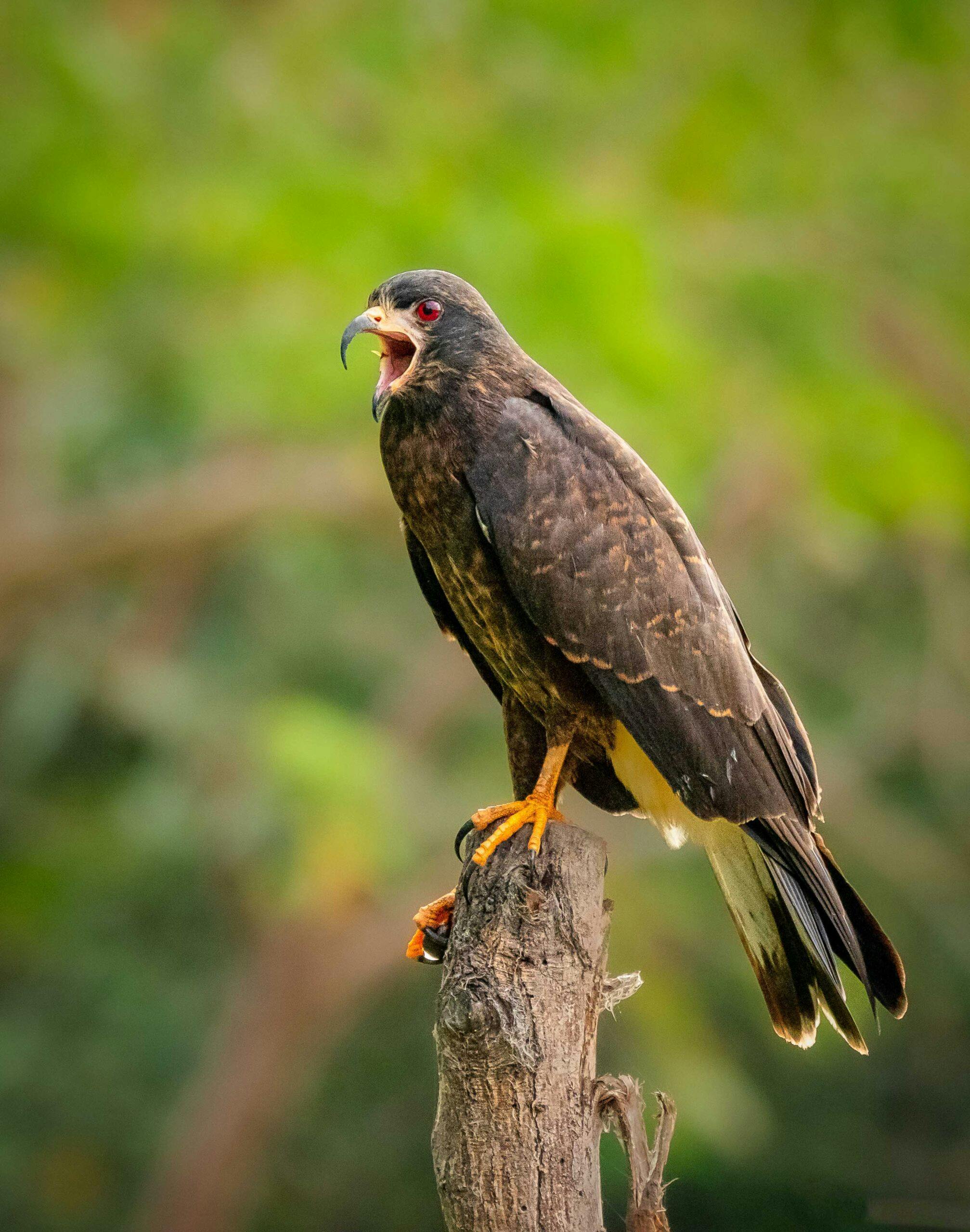
Begin your day with an early departure for a short 15-minute drive to Sonso Lagoon, a rare and vibrant remnant of wetland habitat in the Cauca Valley. This ecological gem is one of Colombia’s premier wetland birding hotspots, home to an abundance of species. As you explore the marshes and lagoons along the Cauca River, watch for Fulvous and Black-bellied Whistling Ducks, Roseate Spoonbill, Glossy Ibis, Anhinga, and a variety of herons including Little Blue, Cocoi, and Striated. Snowy Egrets, Black-necked Stilts, and Snail Kites are also regular sightings.
One highlight here is the Wattled Jacana, notable for its unusual polyandrous mating system—females’ mate with multiple males in a season. This rare behavior occurs in fewer than 1% of bird species and is most often found in shorebirds.
Keep an eye out for other standout species such as the endemic Apical Flycatcher and Grayish Piculet, as well as Jet Antbird, Blackish Rail, Ruby-topaz Hummingbird, and the unmistakable Horned Screamer. Riparian zones may reveal Greater Ani, Ringed Kingfisher, Crested and Yellow-headed Caracaras, Red-crowned and Spot-breasted Woodpeckers, and Cocoa Woodcreeper. Greater Anis are particularly intriguing—they live in communal groups of unrelated pairs that share a single nest and collectively raise the young.
Following lunch, you’ll continue your journey across the Cauca Valley and begin the scenic ascent into the central Andes, heading toward the city of Manizales in Colombia’s iconic Coffee Triangle.
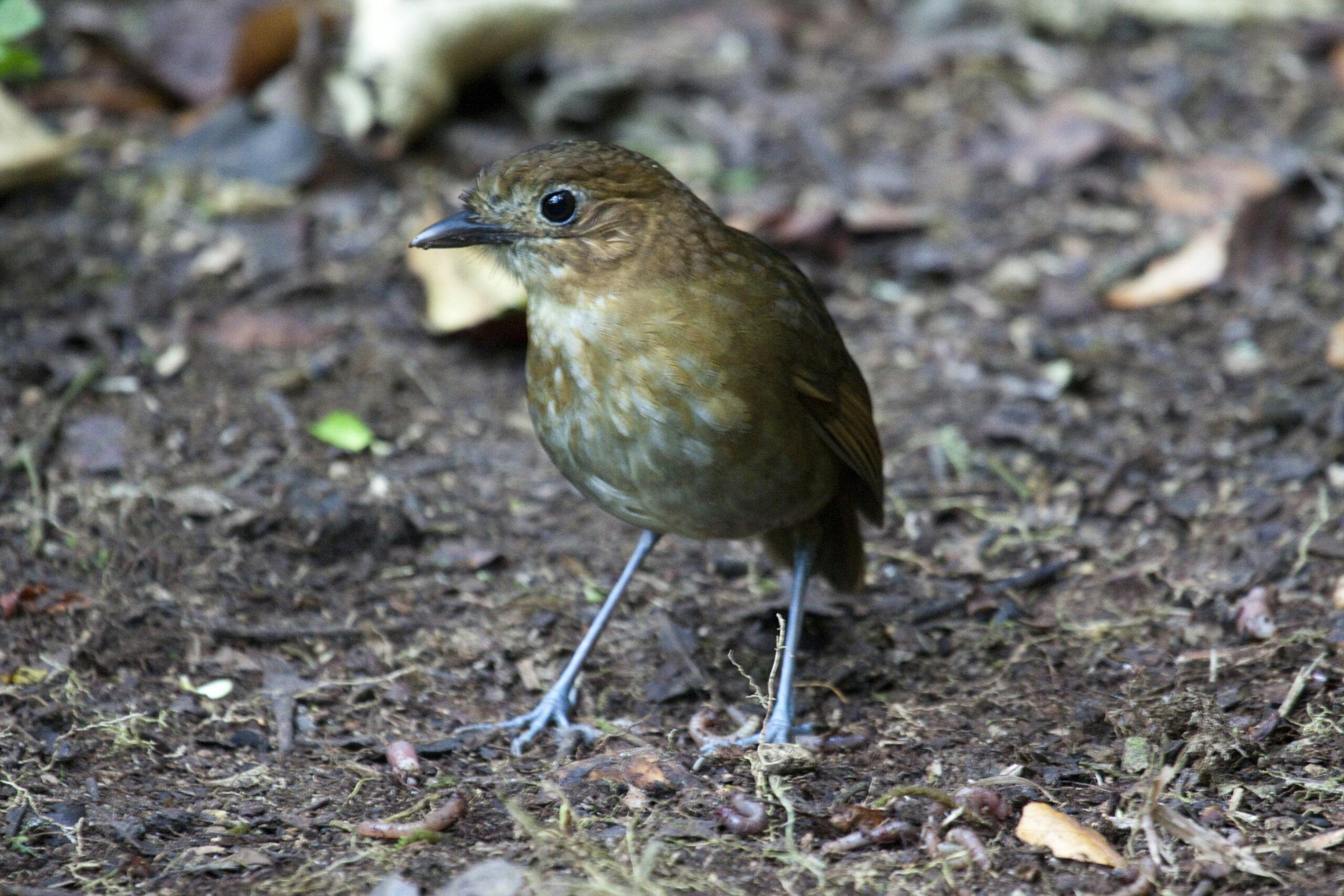
The Río Blanco Reserve, managed by Aguas de Manizales, the city’s water utility, is located along an elevational gradient, resulting in a rich mosaic of ecosystems. This diversity supports an impressive array of birdlife, including up to five species of antpitta. With luck, and just a short walk from the lodge, you may encounter the endemic and endangered Brown-banded Antpitta, the elusive Bicolored, as well as Chestnut-crowned, Chestnut-naped, and Slate-crowned Antpittas at specially maintained feeding stations.
Other rare feeder visitors may include Slaty-backed Nightingale-Thrush and Stripe-headed Brushfinch. Throughout the reserve, birders also have the chance to spot uncommon and threatened species like Rufous-fronted and Golden-plumed Parakeets, as well as the highly coveted Masked Saltator.
Among the many other birds that may be encountered in this biodiverse haven are Tyrannine Woodcreeper, Golden-fronted Whitestart, Dusky Piha, Lachrymose and Buff-breasted Mountain Tanagers, and the brilliantly colored Grass-green and White-capped Tanagers. Keep an eye out for the striking Powerful Woodpecker and the elusive trio of Ocellated, Blackish, and Spillman’s Tapaculos. Other noteworthy possibilities include the Long-tailed, Black-billed Peppershrike, the distinctive Plushcap, Red-hooded Tanager, Mountain Cacique, and another opportunity to see the endangered Golden-plumed Parakeet.

Located next to Río Blanco, the Owl’s Watch Nature Reserve offers a valuable opportunity to search for any species that may have eluded us earlier. The dedicated staff here have also perfected the use of feeders to attract a dazzling variety of hummingbirds. Among the possible highlights are Tourmaline Sunangel, Buff-tailed Coronet, Speckled Hummingbird, Bronzy and Collared Incas, Mountain Velvetbreast, the delicate and slow-flying White-bellied Woodstar, and the spectacular Long-tailed Sylph.
Hacienda El Bosque is about an hour’s drive from Manizales, so plan to arrive early enough to enjoy breakfast before diving into a day of exceptional birding. This working dairy farm, set amid highland forests and páramo, has been actively conserving its natural habitats for decades.
The reserve is home to several sought-after species, including the elusive Crescent-faced Antpitta and the striking, Gray-breasted Mountain Toucan, which often visits feeders for grapes. Hummingbird highlights may include Collared Inca, Tourmaline Sunangel, Buff-winged Starfrontlet, Mountain Velvetbreast, Purple-backed Thornbill, and the remarkable Sword-billed Hummingbird. You might also encounter the colorful Hooded Mountain-Tanager along the trails.
Lunch will be served at the hacienda, followed by more birding in the afternoon. Later, you'll continue your journey up into the high Andes to Hotel Termales del Ruiz, perched at 11,000 feet. Here, you’ll settle in for two nights, with time to unwind in the therapeutic, mineral-rich hot springs and take in sweeping views of the Central Andes.
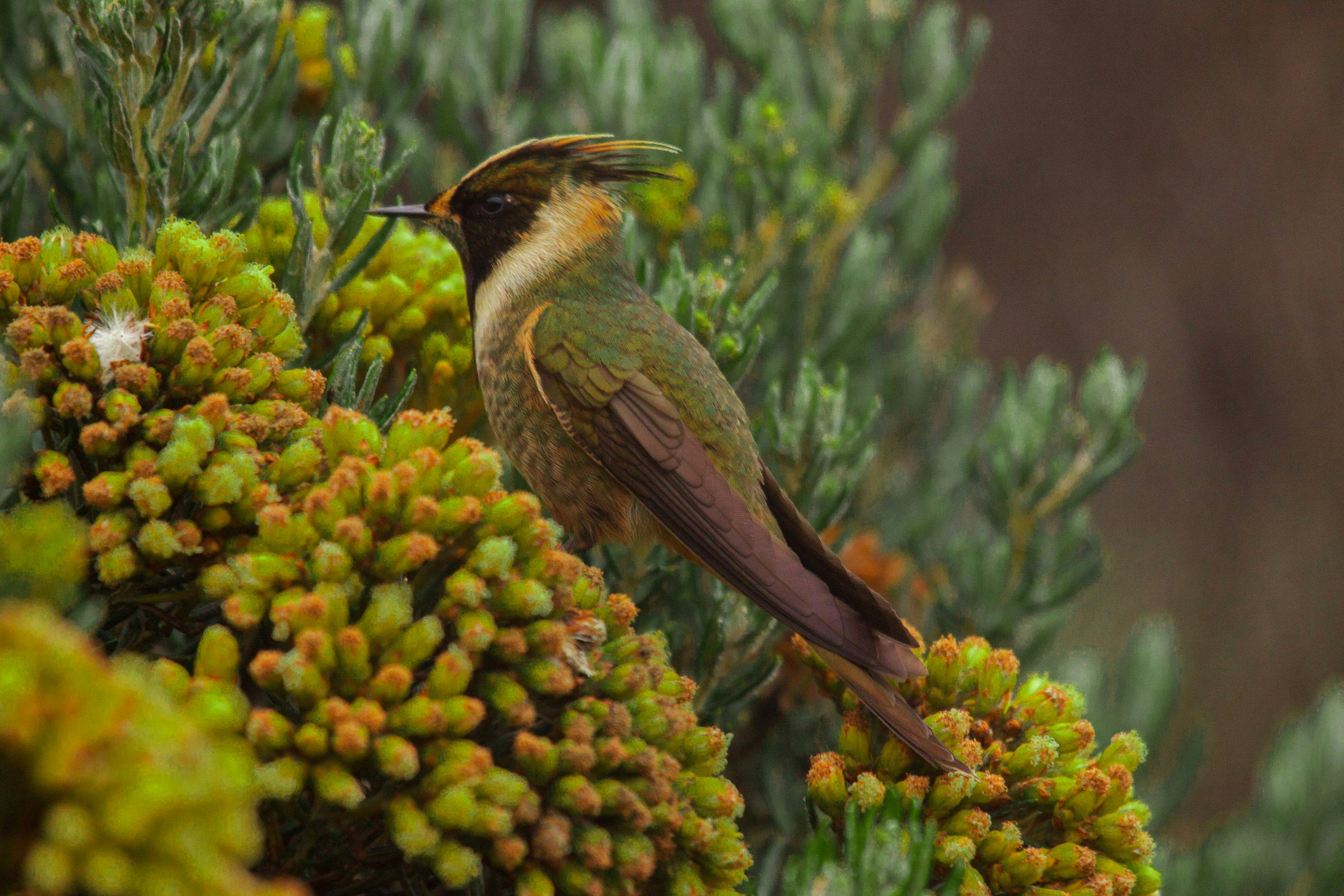
Explore Los Nevados National Park, located on the highest part of the Colombian central Andes. Wind through patches of forest that open to Paramo, an ecosystem of tropical grasslands above the treeline, toward the picturesque 5,300-meter (17,400-foot) volcano Nevado del Ruiz. The scenery in Paramo is magical and surreal, with velvety frailejon plants adding to this effect. Frailejon plants belong to the Espeletia genus and are endemic to Colombia, Venezuela, and Ecuador.
The tour reaches elevations up to 13,000 feet, so it will be cold. Here the goal is to find species adapted to high elevations like the endemic Buffy Helmet Crest and the near endemic Rainbow-Bearded Thornbill, both of which sometimes forage on the ground. Also possible are Viridian Metal Tail, Stout-billed Cinclodes, Brown-backed Chat-tyrant, the beautiful Golden-crowned Tanager, near endemic Black-backed Bush Tanager, and Glossy Flower Piercer. We may also find a variety of seedeaters in the Paramo, including Plumbeous Sierra Finch plus Paramo and Plain-colored Seedeaters.
The morning is spent searching for any targets that may have been missed and enjoying the hummingbird feeders at the hotel. There is also a chance to look for the very rare and endangered endemic Rufus-fronted Parakeet along a two-kilometer stretch of road that passes through elfin forest, an ecosystem of dwarfed plants. You may spot the very tame Tawny Antpitta, a common companion in this area.
You will stop for lunch at Tinamu Lodge where some of the species include Moustached Puffbird, Jet Antbird, Stripe-throated Hermit, and Bay-headed, Blue-necked and Guira Tanagers. Fifteen species of hummingbirds have been observed at the lodge, including Long-billed Star Throat, White-vented Plumeteer, and Western Emerald.
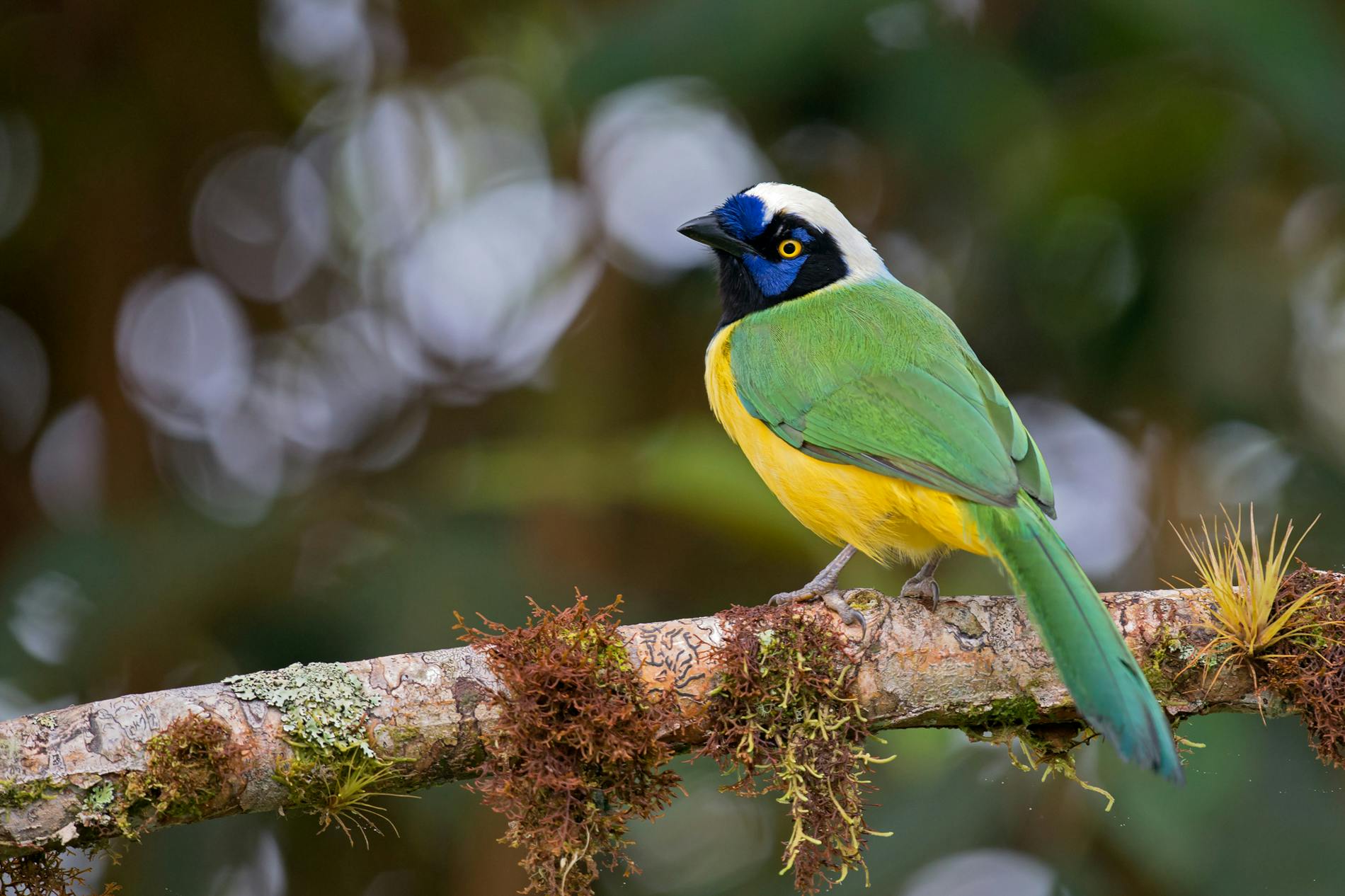
Located on the western slope of the Central Andes, the Otún-Quimbaya Reserve is a protected sanctuary for both flora and fauna. It is home to the majestic Wax Palm—the tallest palm in the world and Colombia’s national tree. Uniquely adapted to thrive at high elevations and in cool, misty climates, these palms create a dramatic backdrop for wildlife viewing.
As you enter the reserve, you'll likely be greeted by the resonant calls of Howler Monkeys and, if you're lucky, a sighting of the endangered and endemic Cauca Guan. Once thought extinct, this striking species was rediscovered here in 1990. Another elusive highlight is the endemic Hooded Antpitta, while Otún-Quimbaya is also among the best places on Earth to observe the impressive Red-ruffed Fruitcrow.
Your birding efforts will focus on several endemics, including the Chestnut Wood Quail and the recently described Stiles’s Tapaculo. Near-endemics like the Moustached Antpitta, the dapper Rufous-breasted Flycatcher, and the vibrant Golden-fronted Whitestart are also top targets. Other standout species you may encounter include Three-striped, Russet-crowned, and Canada Warblers; Masked Trogon; Green Jay; Andean Motmot; Blue-naped Chlorophonia; and Orange-bellied Euphonia. You'll also be on the lookout for Black-billed Mountain Toucan, Chestnut-breasted Wren, Plumbeous-crowned Tyrannulet, Marble-faced and Variegated Bristle-Tyrants, and both Glossy and Masked Flowerpiercers.
This day is devoted to traveling to the spectacular Araucana Lodge, with a stop at Rio Bravo in the Cauca Valley where the main goal is to photograph Ruby Topaz Hummingbird. The bird is attracted to the yellow flowers of the Aloe Vera plant, which is planted at the park specifically to attract this species.

Spend the day around the famous KM 18, located on a 5,900-ft (1,800-m) pass 11mi (18km) northwest of Cali, along the road connecting Cali with Buenaventura's port city. Birding can be very productive with more than 180 species recorded in the San Antonio Forest. You’ll search for four endemics: Chestnut Wood Quail, Colombian Chachalaca, Grayish Piculet, and the threatened, spectacular Multicolored Tanager. This area is a tanager paradise where you have a good chance to observe some stunning birds like Choco-endemic Purplish-mantled, Summer, Golden, near-endemic Scrub, Metallic-green, Saffron-crowned, and Golden-naped Tanagers as well as Ashy-throated Bush Tanager and Blue-winged Mountain Tanager.
You may be privileged to see an impressive show of hummingbirds at a private house along the same road including the beautifully ornate Long-tailed Sylph, Booted Rackettail, Blue-headed Sapphire, Green Violetear, Fawn-breasted Brilliant, Speckled Hummingbird, White-necked Jacobin, Brown Violetear, and Tawny-bellied Hermit. Birding the forest can also produce many near endemics such as Scrub Tanager, Purple-throated Woodstar, and Nariño Tapaculo.

Perhaps Colombia’s most famous birding locations is the Anchicaya watershed is in the Farallones National Park, one of the most diverse parks on the planet. The bird¬ing begins just 30min from the hotel via a paved road that can offer many of the Choco endemics that this mega diverse locality has to offer. You will spend the day birding along the upper portion of the road.
You will devote some time to the El Descanso area where Doña Dora, displaced by war, started a small cafeteria to support her family, which she, over time, has turned into a destination for birders. You can observe many of the following in the area: Rufous-throated, Glis¬tening-green, and Silver-throated Tanagers. A day of birding on the road should yield many highly prized species including the endemic Crested Ant Tanager, Golden-collared Honeycreeper, White-whis¬kered Puffbird, Uniform Treehunter, Sooty-headed Wren, Green Thorntail, and Empress Brilliant. Toucan Barbet, sporting five different colors elegantly while still having a tough de¬meanor, will be one of the main targets. Don’t forget to keep scanning the skies for Barred hawk, Ornate Hawk-eagle, and Swallow-tailed Kites, whilst keeping an eye out on low branches for the attractive Ornate Flycatcher feeding. Another target is the recently described Tatama Tapaculo.
After lunch you’ll drive two hours to an Andean Cock-of-the-Rock lek to witness the spectacular mating rituals of these fascinating birds.
Spend the day on the 30 acres of the Araucana Lodge in search of some of the targets that include species such as Parker’s Antbird, Grayish Piculet, Apical Flycatcher, Smoky Brown Woodpeck¬er, Bar-crested Antshrike, Spectacled Parrotlet, Scaled Antpit¬ta, Crimson-rumped Toucanet, Colombian Chachalaca, and Scale-crested Pygmy-tyrant.
You will also have opportunities to explore the more than 5km of trails that wind through the pre-montane forest on the property and stroll around the organic coffee, fruit, and vegetable gardens that provide produce for your meals at the lodge.
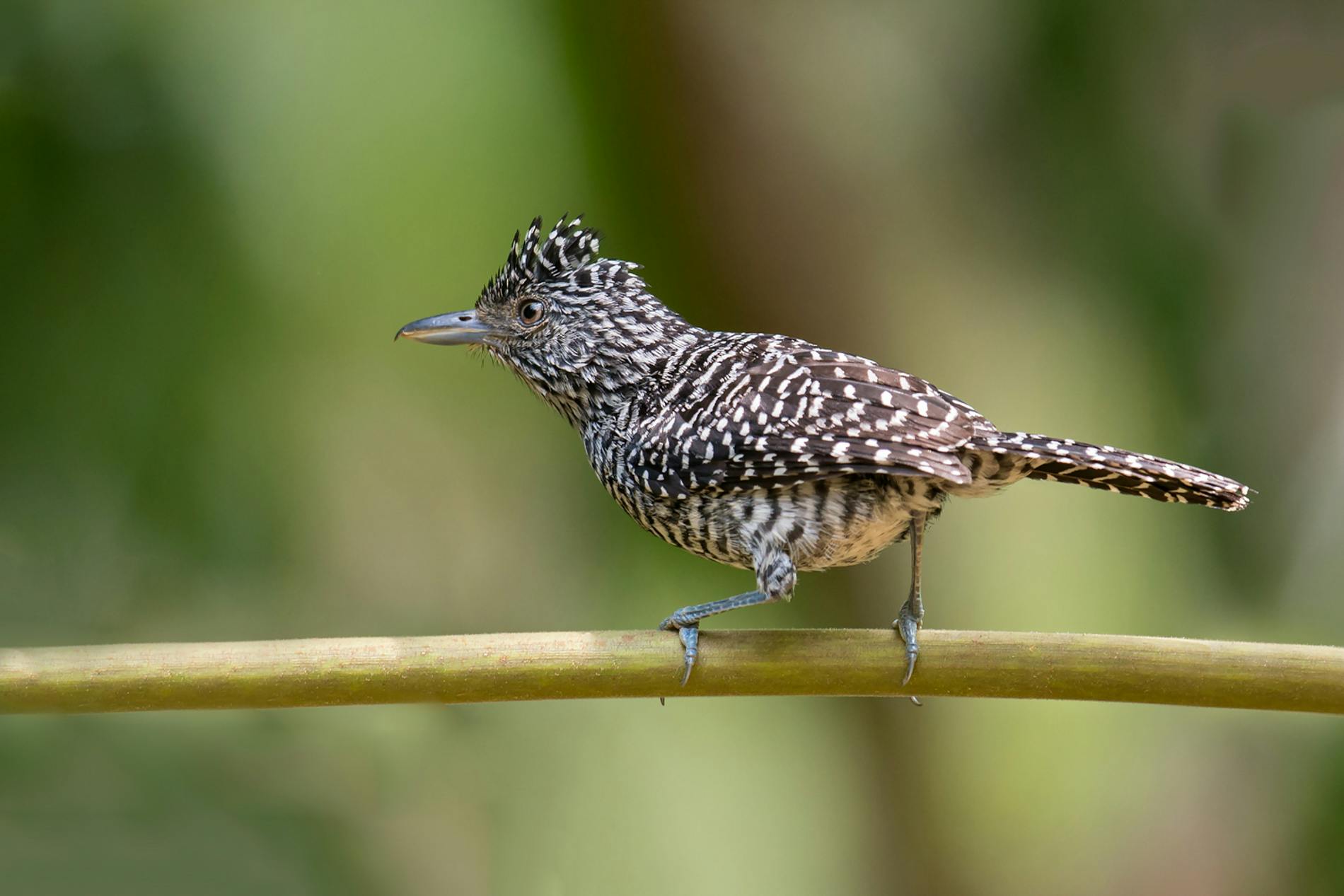
Drive for about 1.5 hours to Zaragosa, your entry point into the humid forests of the San Cipriano Reserve. Since the reserve does not have roads, access is via a pleasant ride on brujitas, which are motorcycle-powered wooden carts on rails that have been ingenuously engineered by the locals. In the heart of the Choco Bioregion, the area is known for being one of the wettest and most biodiverse on the planet. Some of the possible birds include Choco Toucan, Stripe-billed Aracari, Blue-headed Parrots, Spot-crowned, Broad-billed Motmot, Pur¬ple-throated Fruitcrow, and Tawny-crested Tanager. Also possible are near endemics: Black-tipped Cotinga, Rose-faced Parrot, and Five-colored Barbet.
The area is teeming with antbirds, with chances to see Ocellated, Jet, Stub-tailed, and Bicolored Ant¬birds. With the high humidity and heat, you hope to find species such as Pacific and Checker-throated Antwrens, Pacific Flatbill, Cinnamon Becard, Thicket Antpitta, Black-chested Puffbird, White-ringed Flycatcher, Blue-black Grosbeak, and Blue-crowned and Golden-collared Manakin.
Begin the day with a 40-minute drive to the village of Atuncella, where a unique dry forest ecosystem thrives thanks to a localized rain shadow. This unusual habitat supports several endemic cactus species and is home to charismatic birds such as Bar-crested Antshrike and Striped Cuckoo. Other key species in the area include Pale-breasted Spinetail, Golden-rumped Euphonia, and two Colombian endemics—the Apical Flycatcher and Cocoa Woodcreeper.
As temperatures rise, you’ll return to the main road for lunch before continuing on a one-hour drive to the Río Bravo Reserve—one of the wettest regions on Earth. Here, the lush forest provides excellent birding opportunities, with potential highlights including Rufous-throated and Purplish-mantled Tanagers, Brown-billed Scythebill, Sooty-headed Wren, White-winged Tanager, Buff-fronted Foliage-gleaner, Uniform Antshrike, Rufous-rumped Antwren, Cerulean Warbler, and Uniform Treehunter.
After breakfast at the Araucana Lodge, you will be transferred to the airport for your flights home.
| Type | Cost Per Person |
|---|---|
| Trip Cost, double occupancy | $7,650 |
| Single Supplement | $1,190 |
Share the Experience – Earn Travel Credit
Know someone who would love this trip? Refer a friend and you’ll both benefit—you get credit toward a future adventure, and they receive a discount on their first trip with us. See how our Referral Program works ›
Costs are per person, double occupancy, not including airfare, singles extra. See Included and Not Included sections for more details.
| Payment | Due Date | Amount Per Person |
|---|---|---|
| Deposit | Due now to reserve your space | $500 |
| Final | January 22, 2027 | Remaining balance |
Payments are due based on the schedule above. All reservations require a deposit to confirm reservation of your space.
Until the Final Payment due date, deposits are refundable except for a cancellation fee of $150 per person, which can be applied toward another trip if reserved within six months of the cancelled trip’s departure date. Cancellations are non-transferrable. No refunds are given after the Final Payment due date.
The climate has been variable over the last few years. But generally, temperatures will be hot and humid in the lowlands (70°F at night to 85°F during the day) and comfortable in the highlands (60°F at night to 70°F during the day), but it can be quite chilly at high elevations where you should plan to wear layers.
This trip involves ascending from the lowlands to an elevation above 10,000ft. There will be time to acclimate, but if you have heart or lung disease, or any other reason to suspect that high altitude may pose a problem for you, please speak with your doctor before booking this trip. Walks are not strenuous, but the elevation may make them feel more difficult while in the Central Andes. In the lower elevation, the Cock-of-the-Rock lek requires a 15-minute hike down and a 25-minute hike up on a trail in good condition. The days in Sanso Lagoon and San Cipriano require 2 to 3-mile hikes and are hot and humid. Please contact us if you have any health concerns that may make this trip challenging.
Detailed logistical information is included in the Trip Planning Materials we will send you.
Flights you book
Our company ethos has always regarded conservation as inseparable from responsible tourism. We struggle with the dilemma that traveling worldwide expends climate-changing carbon. However, we wholeheartedly believe that traveling with us will cultivate your passion for conserving our beautiful world while stimulating each destination’s local economy. We encourage you to explore the various ways in which Cheesemans’ operates within this context:
Read our current Terms and Conditions.
 Jose Luna
Jose Luna